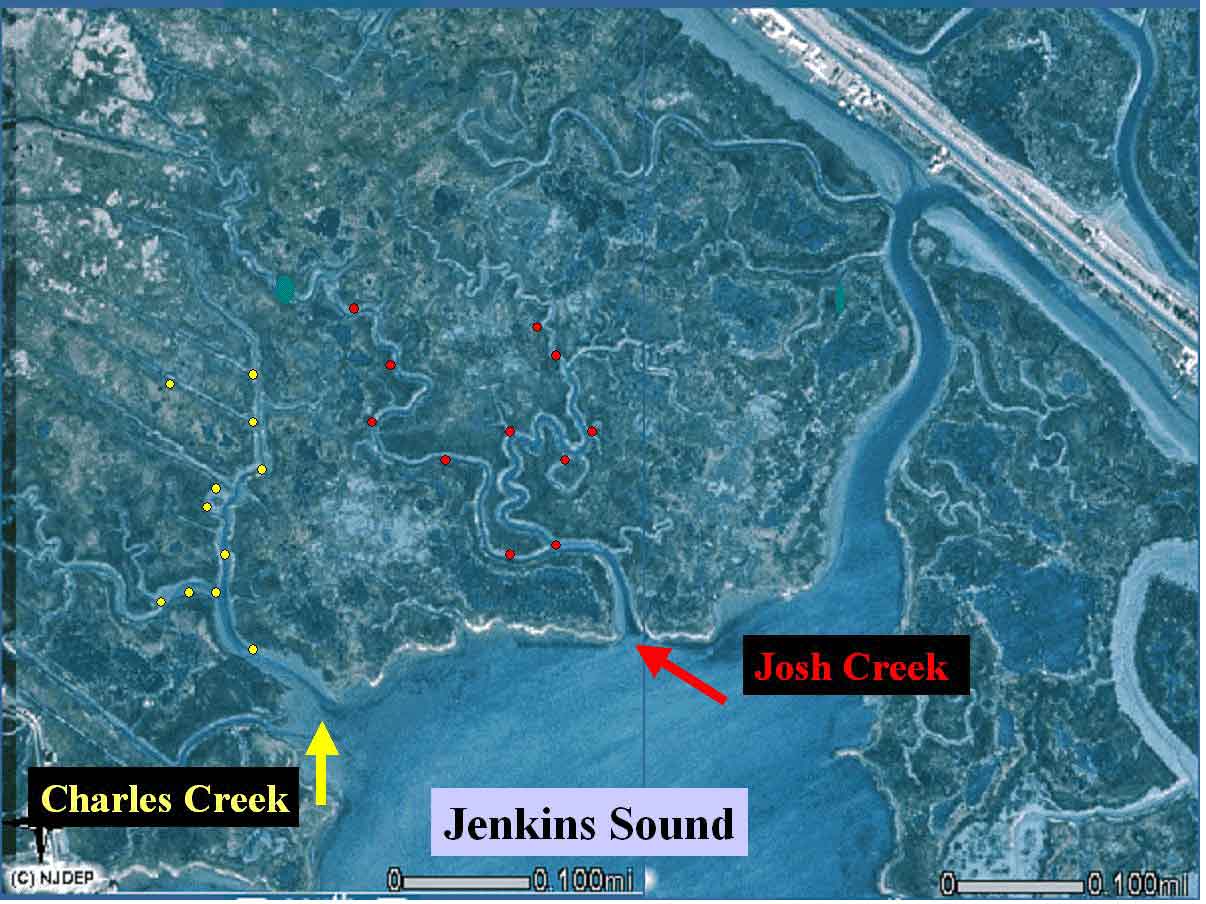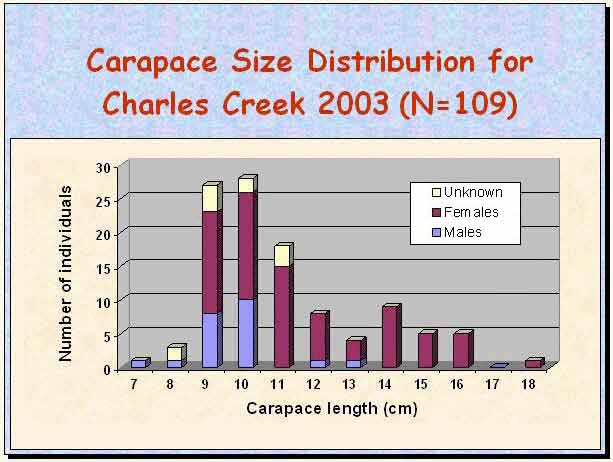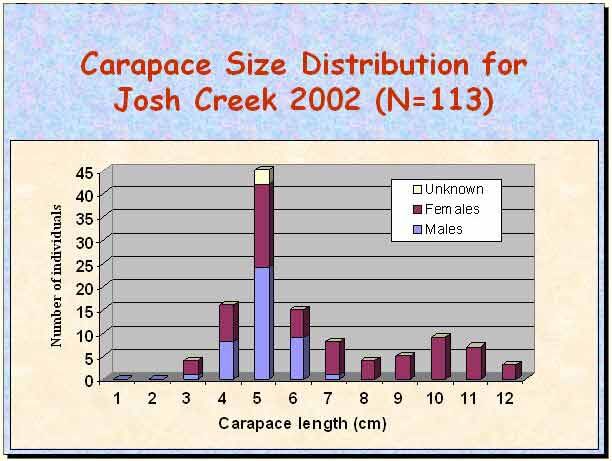|
Charles Creek’s Little Diamonds:
A Survey of a Diamondback Terrapin Population in a Small Tidal Creek

By Riana Rakotondrainy
This summer we conducted a mark/recapture study of the terrapin population of Charles Creek, a small tidal creek within Jenkins Sound. During surveys last year in Josh Creek and Charles Creek, two adjacent creeks within Jenkins Sound, researchers from the Wetlands Institute discovered a slight difference between the terrapin populations in the two creeks: Josh Creek showed a typical population structure with both juveniles, subadults, and adult terrapins, whereas Charles Creek seemed to be populated almost entirely by subadults. It was hypothesized that Charles Creek may be a refugium for immature terrapins.


Satellite image of Jenkins Sound, yellow and red dots indicating
locations of traps set to capture terrapins.
 |
|
This summer we decided to duplicate the study to expand our database and to learn more about the diamondback terrapins' biology. Unfortunately, we were able to cover only Charles Creek this year, our attention being required by the terrapin population’s nesting activities throughout the area.
Commercial crab traps without terrapin excluders were used to trap the terrapins. The traps were distributed randomly throughout Charles Creek (as shown above) and numbered. Bunker was used as bait. We checked the traps every high tide (12h) and changed the bait every 24 hours.
Any terrapins caught were brought to the Institute’s lab for measurements (carapace length, plastron length, weight, etc.) and for a PIT tag check. If a terrapin did not have a PIT tag (a new capture), we gave it one.
The PIT tag is a small electromagnetic microchip (2 mm x14 mm) injected just beneath the skin of the hind leg. It carries a unique 9-digit number with which each terrapin can be identified, using a scanner similar to a bar-code reader.


Male and female diamondback terrapins
showing pronounced sexual dimorphism
 |
|
The sex is also recorded; sexing adult terrapins is relatively easy because of their sexual dimorphism: the males are much smaller in size than the females: 9 to 13 cm for adult males and 14 to 20 cm for mature females, and males have bigger tail.
Our results compared with 2002 data: Josh Creek 2002: 116 terrapins caught: 43 males (subadults and adults), 70 females (subadults and adults) and 3 unknown (the sex was not determined). Charles Creek 2002: [data to be retrieved] and Charles Creek 2003: 109 terrapins caught, almost all immature terrapins, only one large-size female and one juvenile (a headstarter from 2001).


The results this year tend to confirm our hypothesis of Charles Creek being a refugium for immature terrapins. There seems to be habitat partitioning according to body size within the terrapins’ populations. From the data we collected we were also able to estimate the abundance of Charles Creek’s diamondback terrapin population, using the Lincoln-Petersen 2-sample estimator model, assuming that the population is closed, that is, no gains to or losses from the population occur between the sampling periods. The model gives the number 268, but since our sampling size is too small, a 95% interval must be taken, which gives the number of terrapins between 229 and 389 (i.e., there could be as few as 229 and as many as 389 terrapins within Charles Creek).
The origin of such differences between the terrapin population structure of the two creeks is not yet clear. They do not show any differences in terms of size, depth, sediment, and type of vegetation. Thus, further studies need to be done.
|